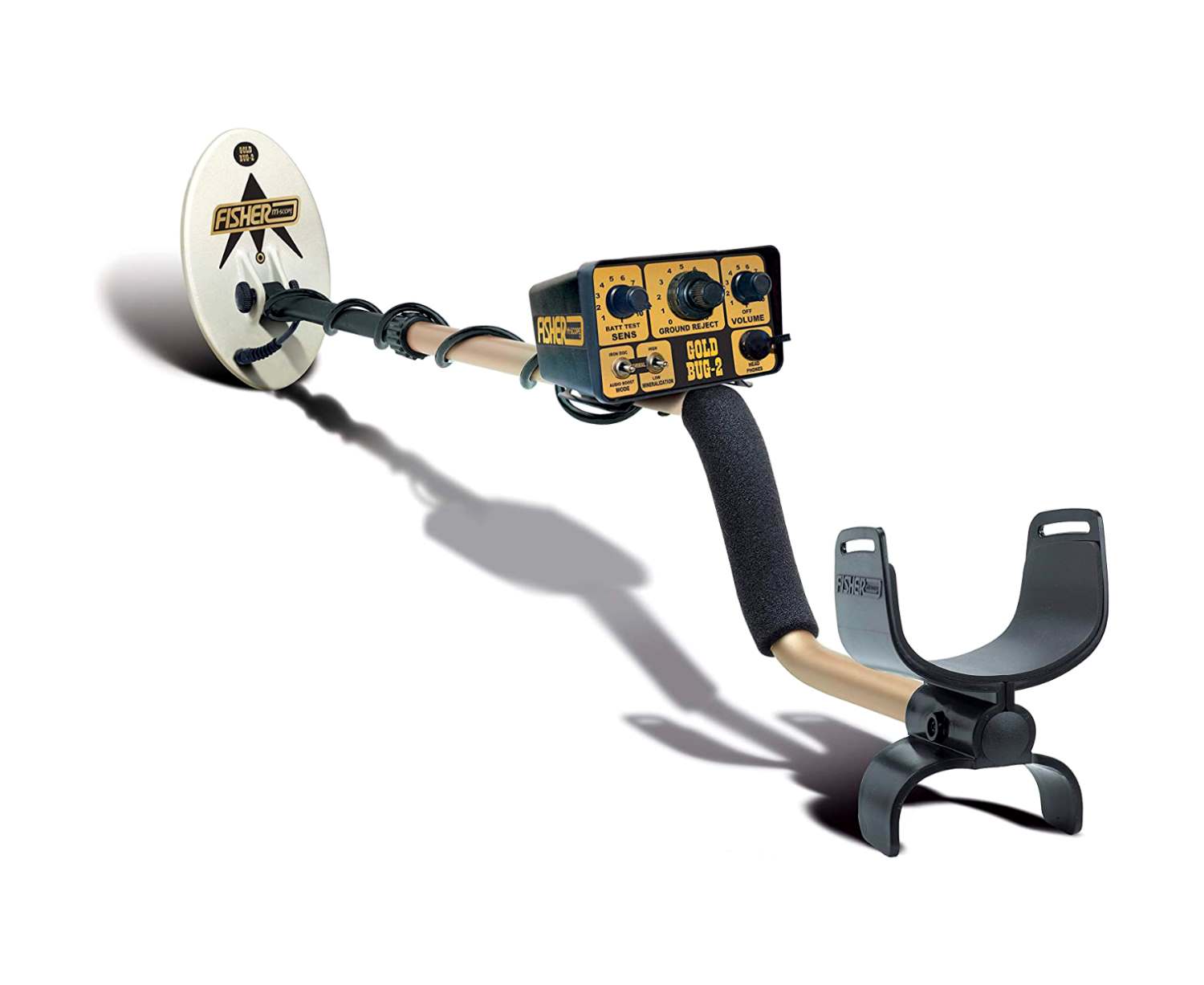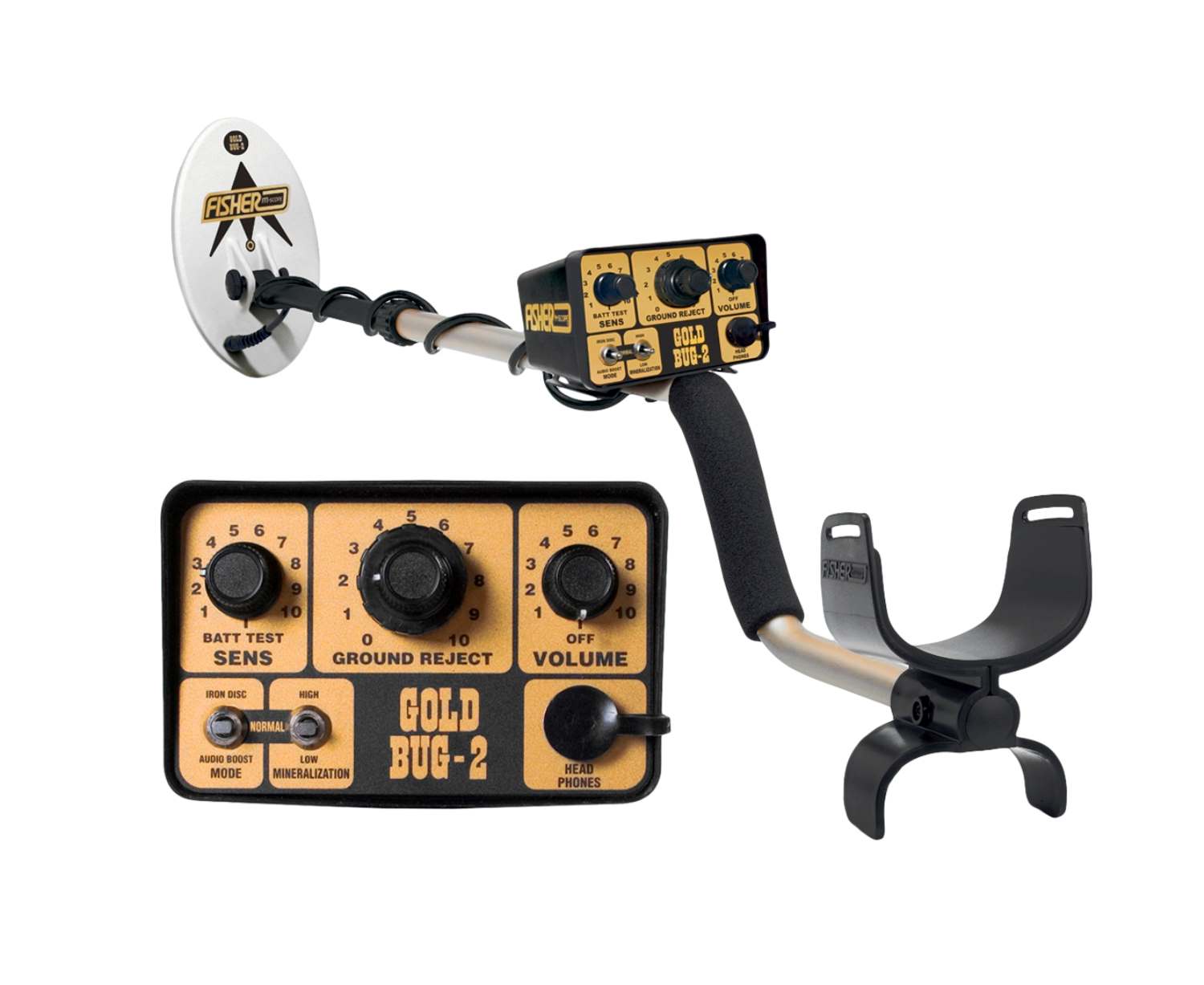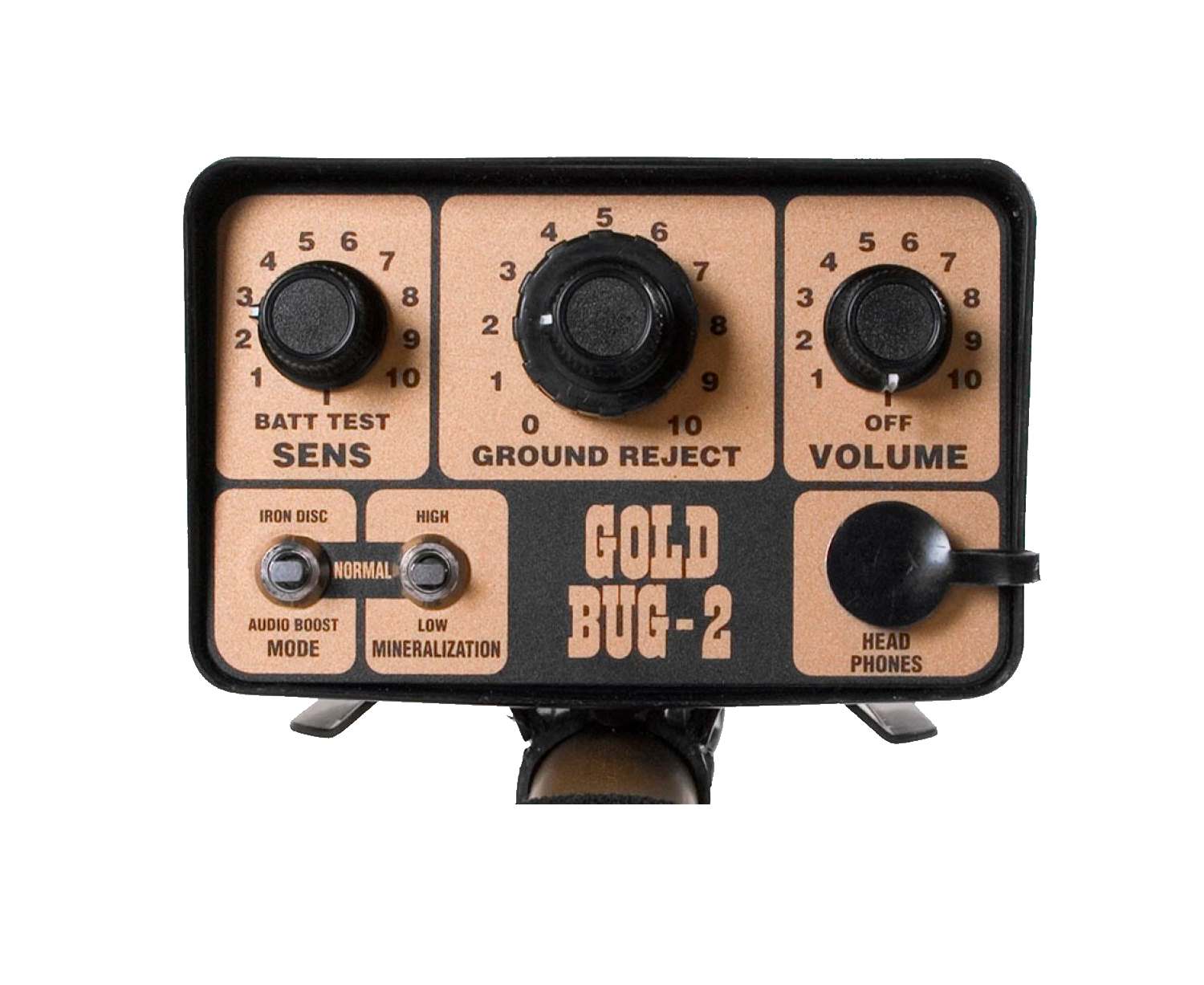GoldBug 2
Fisher Gold Bug 2 Combo Package Includes the following.
The detector for finding the tiniest gold nuggets
The Gold Bug 2 offers extraordinary sensitivity; at 71 kHz it features very high operating frequency. The Gold Bug 2 also features iron discrimination, is dust and moisture resistant, has audio-boost, and can operate in any type of soil with the choice of three mineralization modes. In the Iron Disc Mode, the detector can identify hot rocks and small iron trash items like nails.
Package includes: Detector, 6.5’ & 10” coil
- Extreme Sensitivity to Small Gold Nuggets
- High Precision Dual-Control Ground Balance
- Iron Disc Mode for Iron & Hot Rock Rejection
- Deep Target Audio Boost
- Lightweight & Hip-Mountable
- Available with either a 6 ½” or 10” Elliptical Search Coil
- Operating Frequency: 71 kHz
Recommended for
Gold Nugget Hunting
Setting the pace in a changing industry
With the increasing popularity of the M-Scope, and with Fisher’s patent rights expiring, numerous competitors began producing similar detecting equipment. Through its relentless efforts to incorporate the latest technology into its products and by applying the vast field experience of its users into the design of new metal detectors, Fisher Labs led the industry into a new era of detection technology, capability, and products. Over the years, Fisher has designed and produced such sophisticated products as Geiger counters, radio communication systems, voltage detectors, and cable fault locators.
Demand for the metal detector spurs growth
In 1936 Fisher Labs moved to a small building at 745 Emerson St. in Palo Alto to meet the growing demand for the Metallascope, which was nicknamed the M-Scope. Shortly thereafter, Dr. Fisher was granted a patent for his invention. The M-Scope became the accepted standard for all types of electronic metal detection. Geologists used it to locate ore, treasure hunters found treasure, utility companies pinpointed buried pipes, lumber mills detected metal inclusions in sawn logs, and law enforcement uncovered abandoned and hidden weapons. In 1939, just prior to World War II, Fisher moved to an even larger building in Palo Alto at 1961 University Ave. During World War II and the Korean Conflict, Fisher Research Labs was called upon to contribute its technical competence to the war effort, but the M-Scope business was never neglected.




